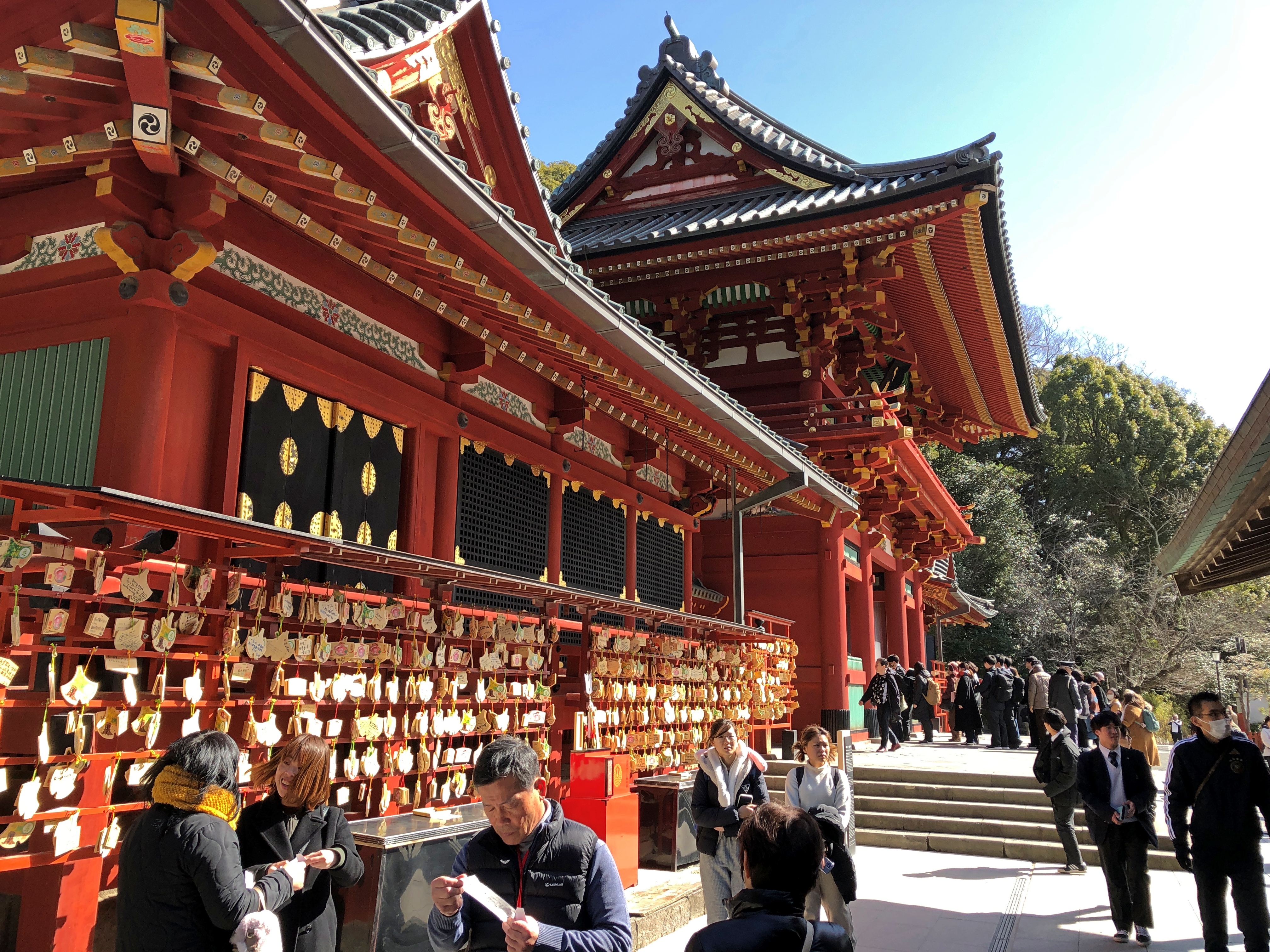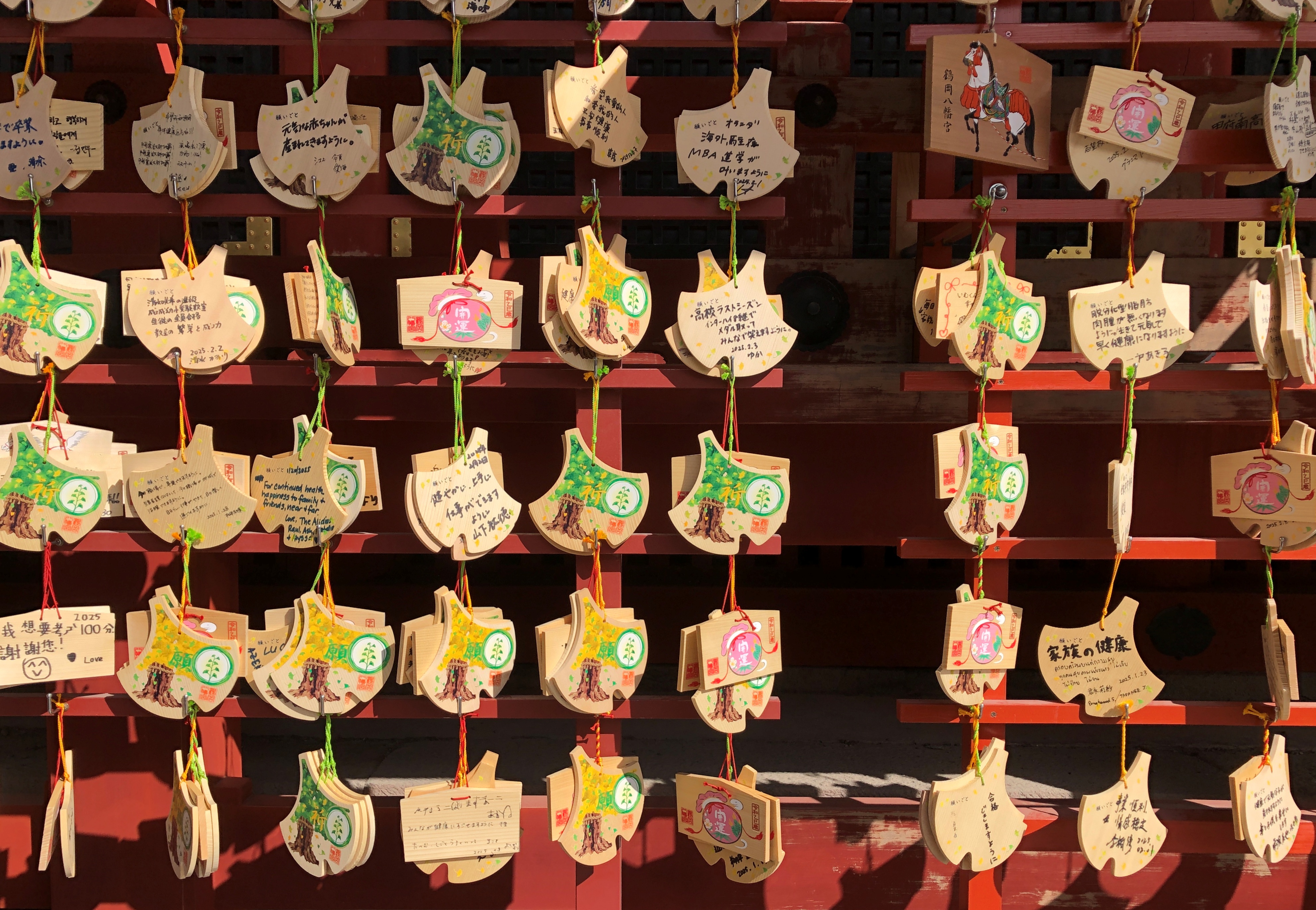In my experience, most visits to Japanese cities start by getting off a train. Most, but not all. In Kamakura, it did.
Torii (鳥居) gates also mark a beginning. Gate gates, in other words, though a torii is a special kind of gate, either marking an entrance to a Shinto shrine or the road to a shrine. (Most of the time.) Not far from the Kamakura main train station is one such gate.
Past it is Komachi-dori, which leads almost directly to Tsurugaoka Hachimangu Shrine. It’s a pedestrian shopping street, which is fairly common in Japan. Less common is that it has a name, since many streets in that country do not. Addresses are determined by increasingly small subdivisions of the land, a system that takes some getting used to, but which seems to work for the Japanese.
Komachi-dori is packed with shops, cafes and restaurants.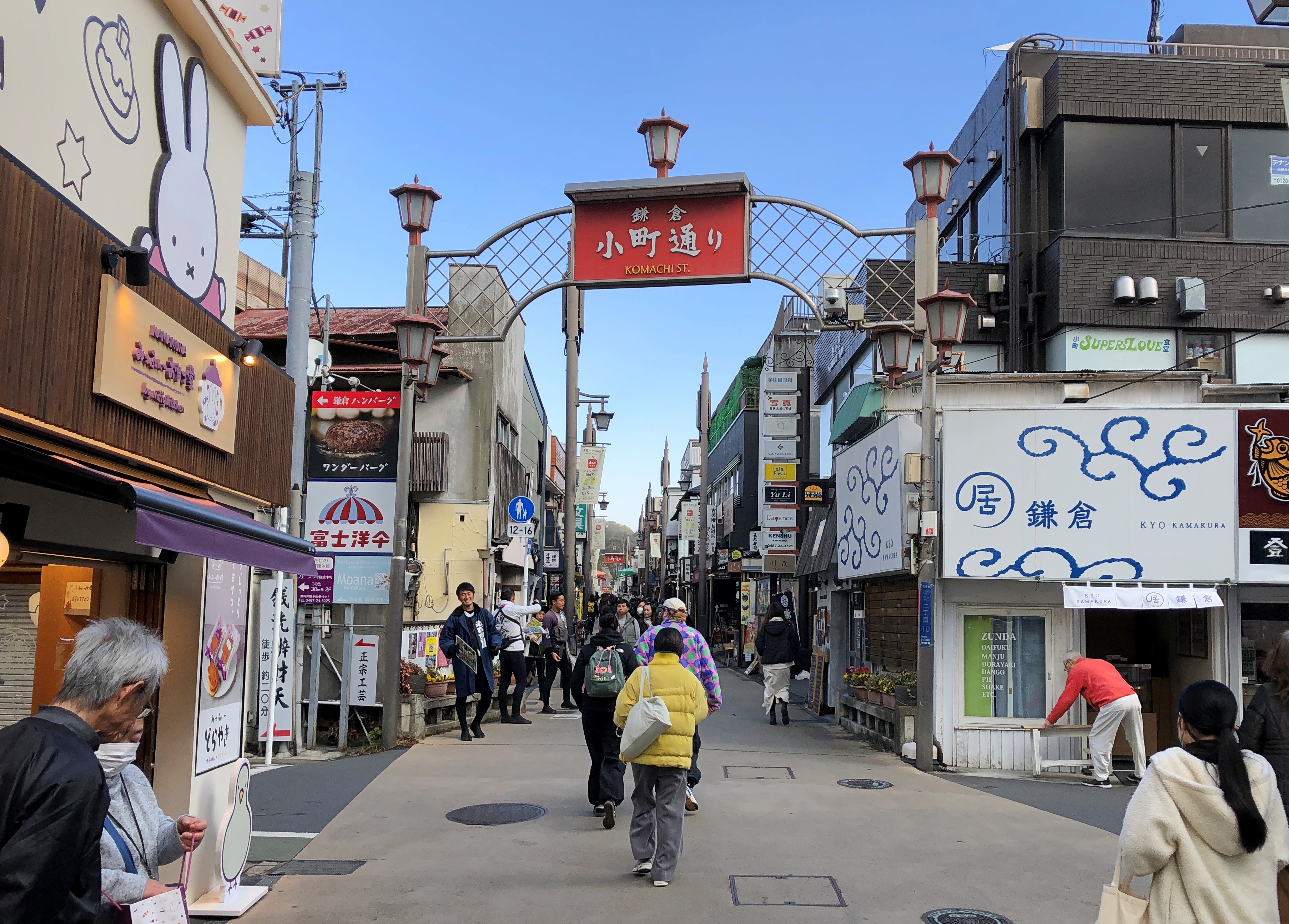
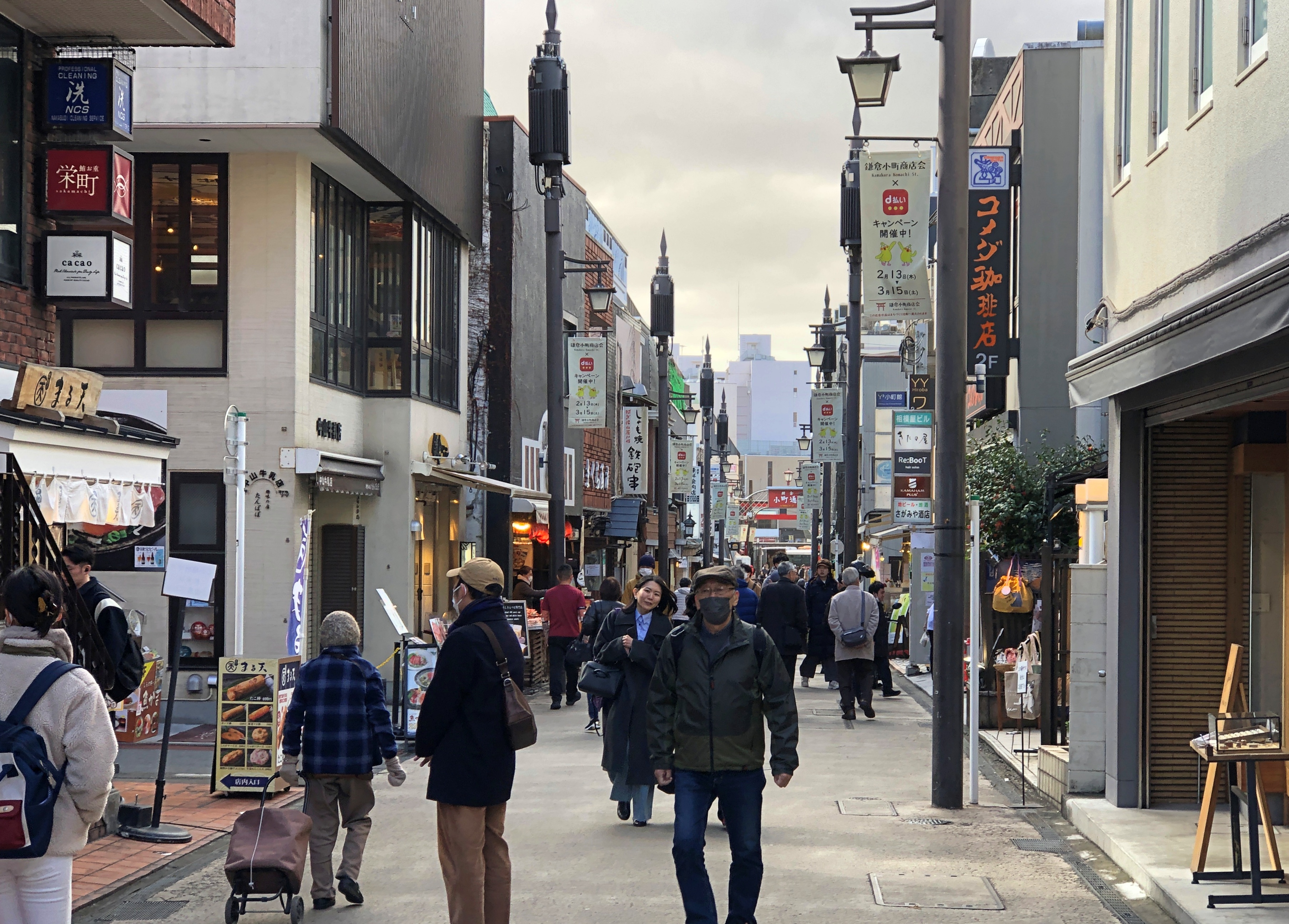
Standard souvenirs are widely available. Standard for Japan, that is.
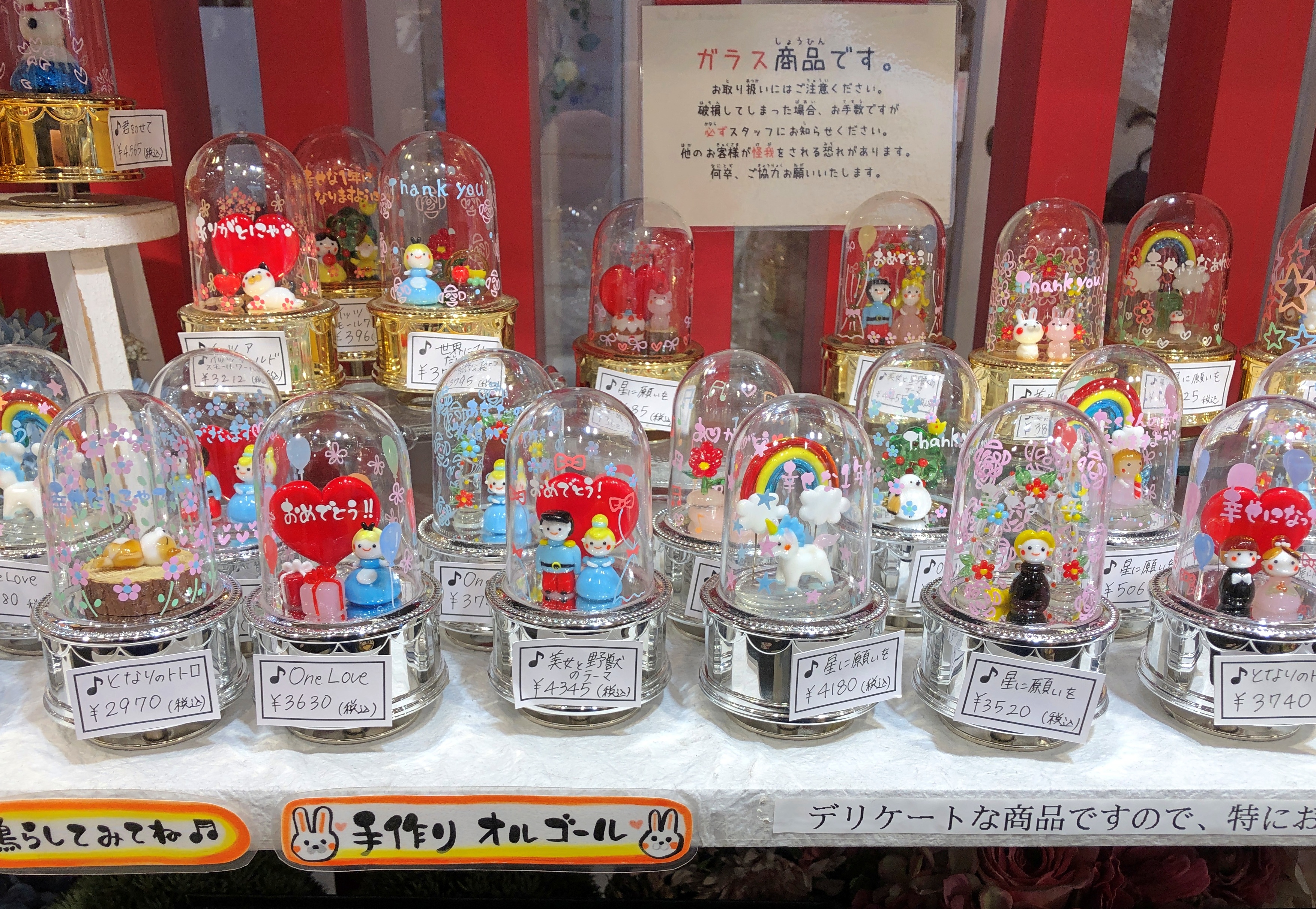
Other places are more unusual, even for Japan. At one shop, you can have a belt custom made.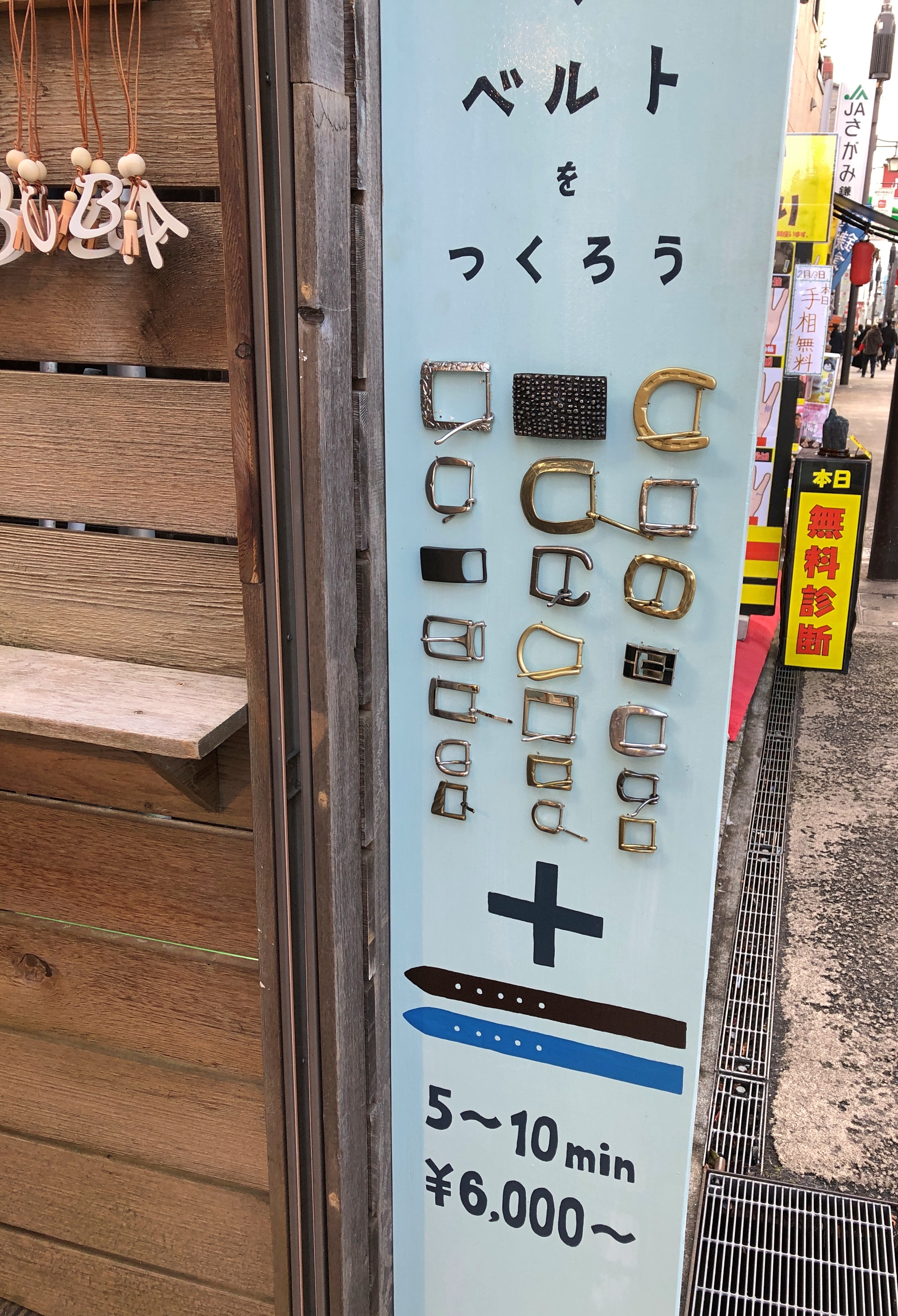
Who knows, artisanal belts might be the rage now. ¥6000 as of today is a bit less than $42, and in February would have been a little less than $40, and maybe worth it, considering the low quality of mass-produced belts that sell for half that much or so. But we didn’t stop in.
We also took a pass on Kamakura Pig Park.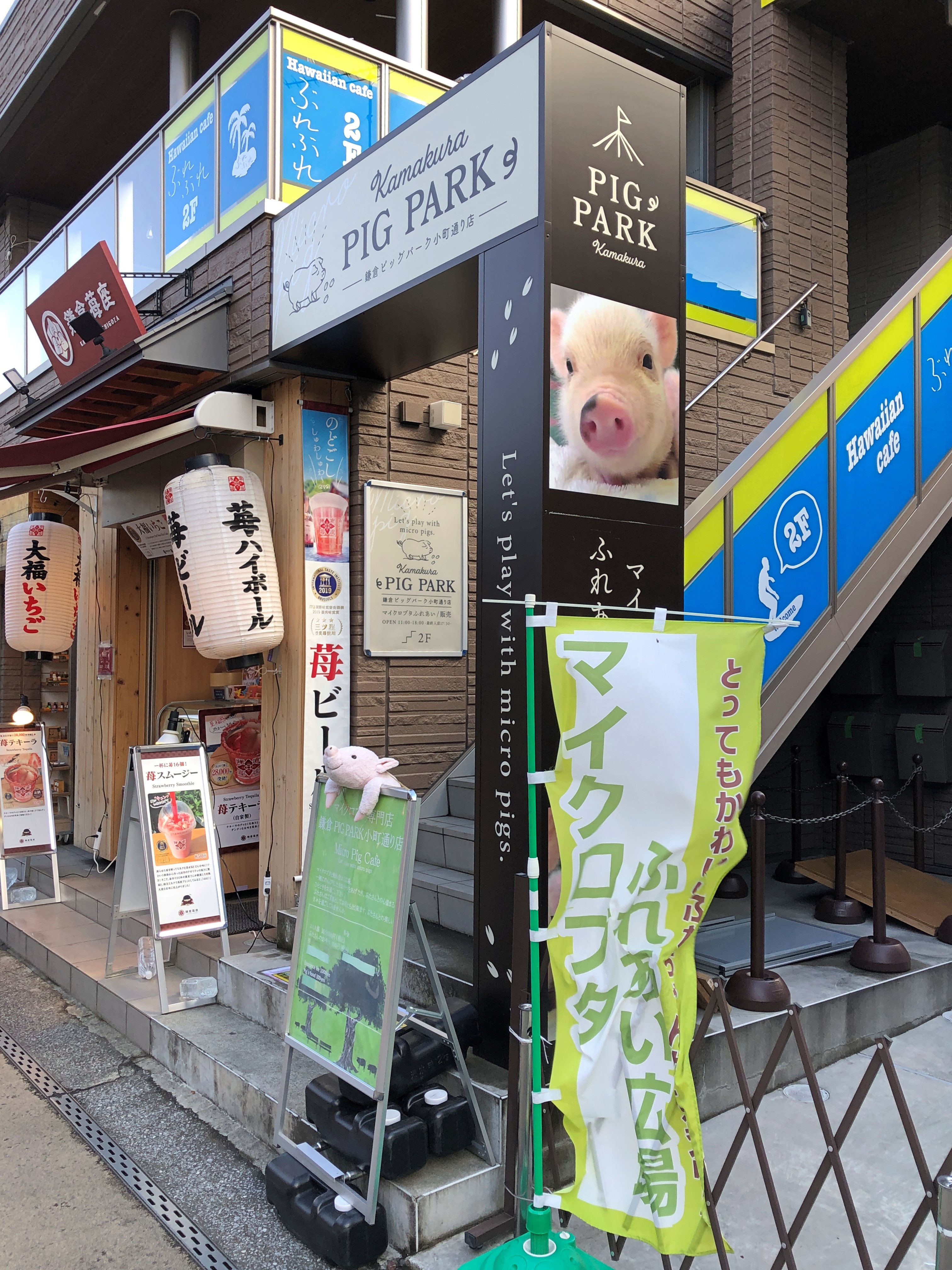

A place where you can have coffee or tea, and play with “micro pigs,” it seems. I understand there is a trend toward cute animal cafes, often cats. We saw one of those on the street as well.
Tsurugaoka Hachimangu Shrine is a large Shinto complex, founded in the 11th century of the Common Era and getting a boost during the Kamakura shogunate not long after. The grounds include some handsome structures, smaller and larger.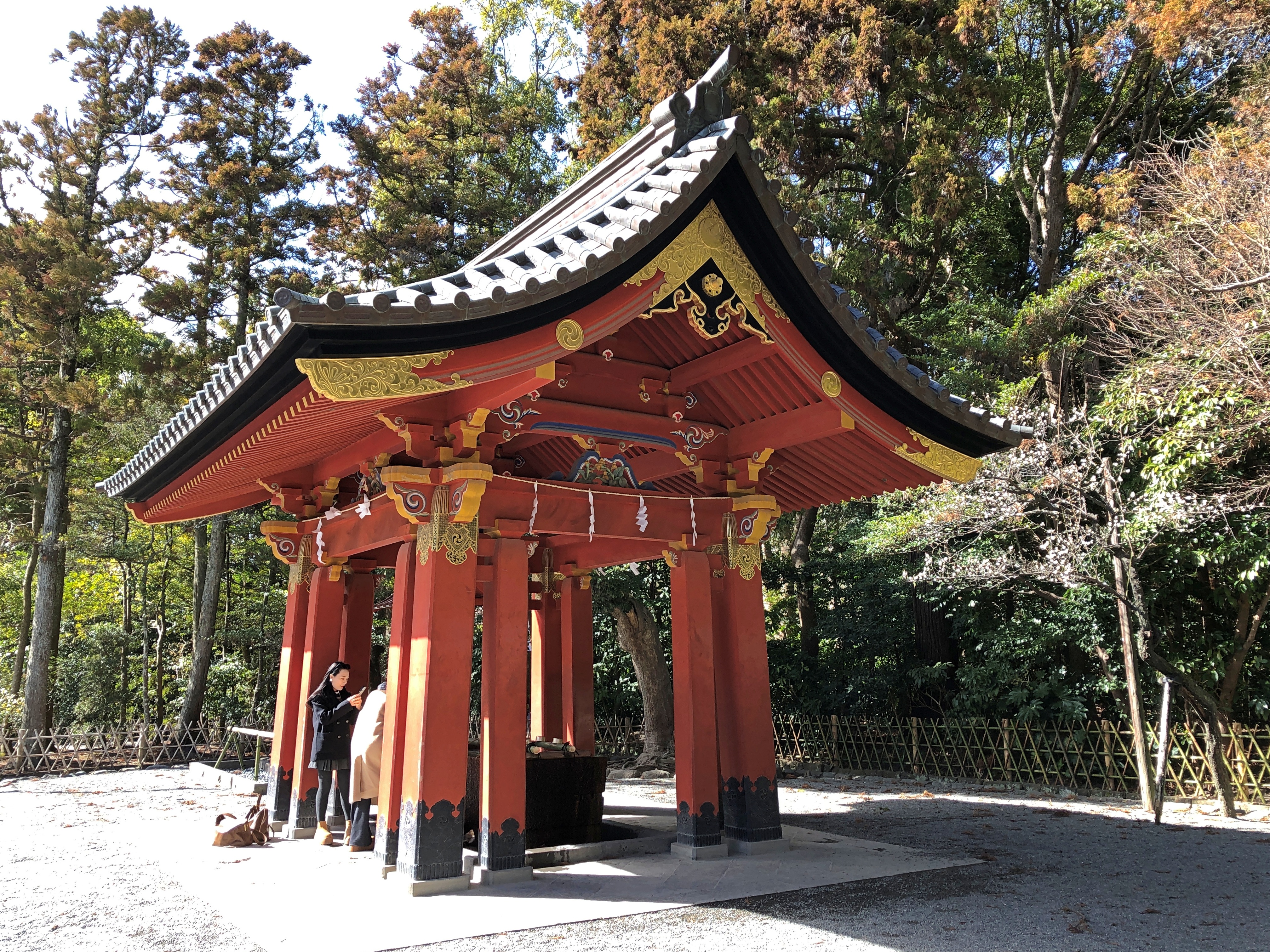
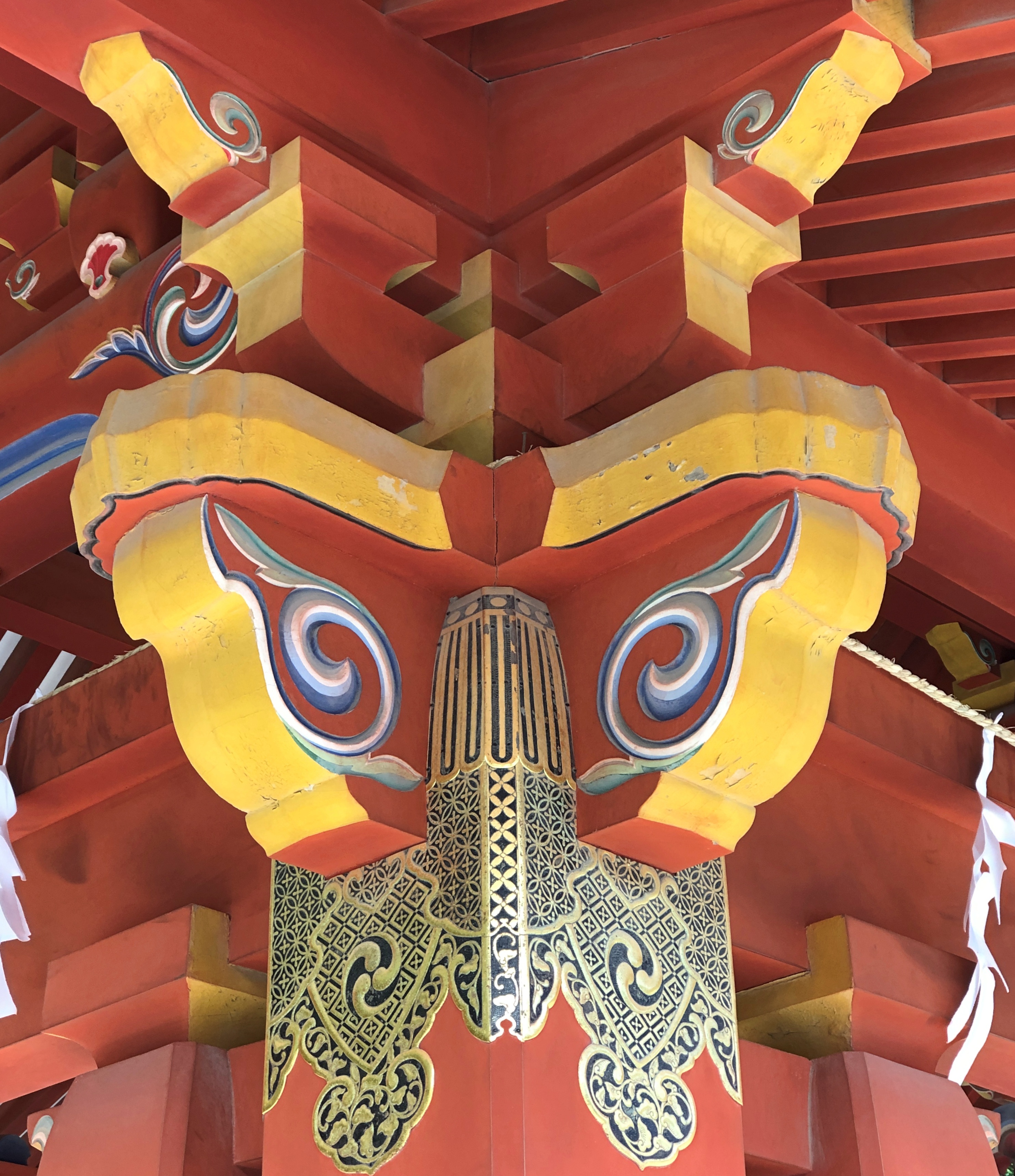
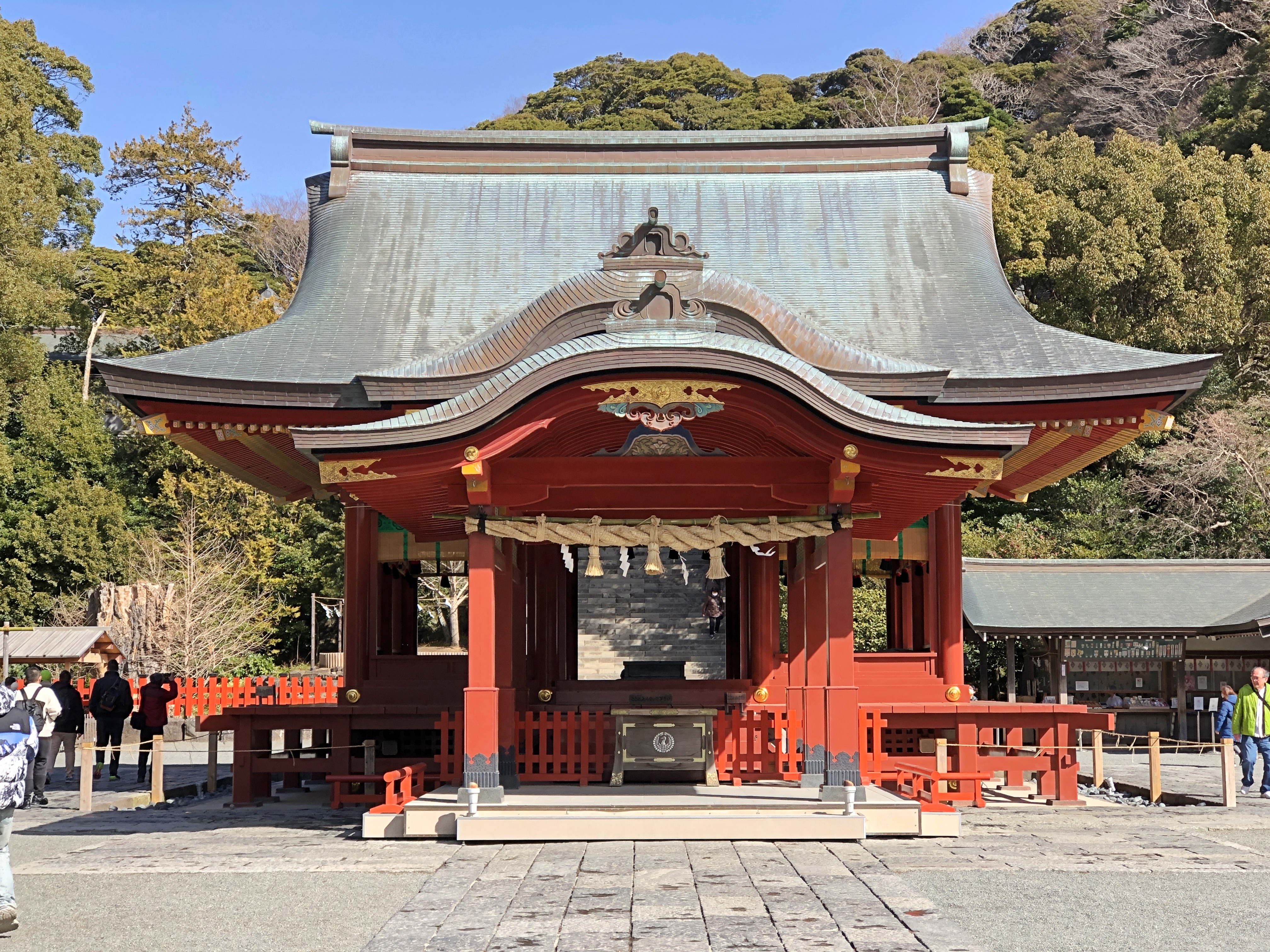
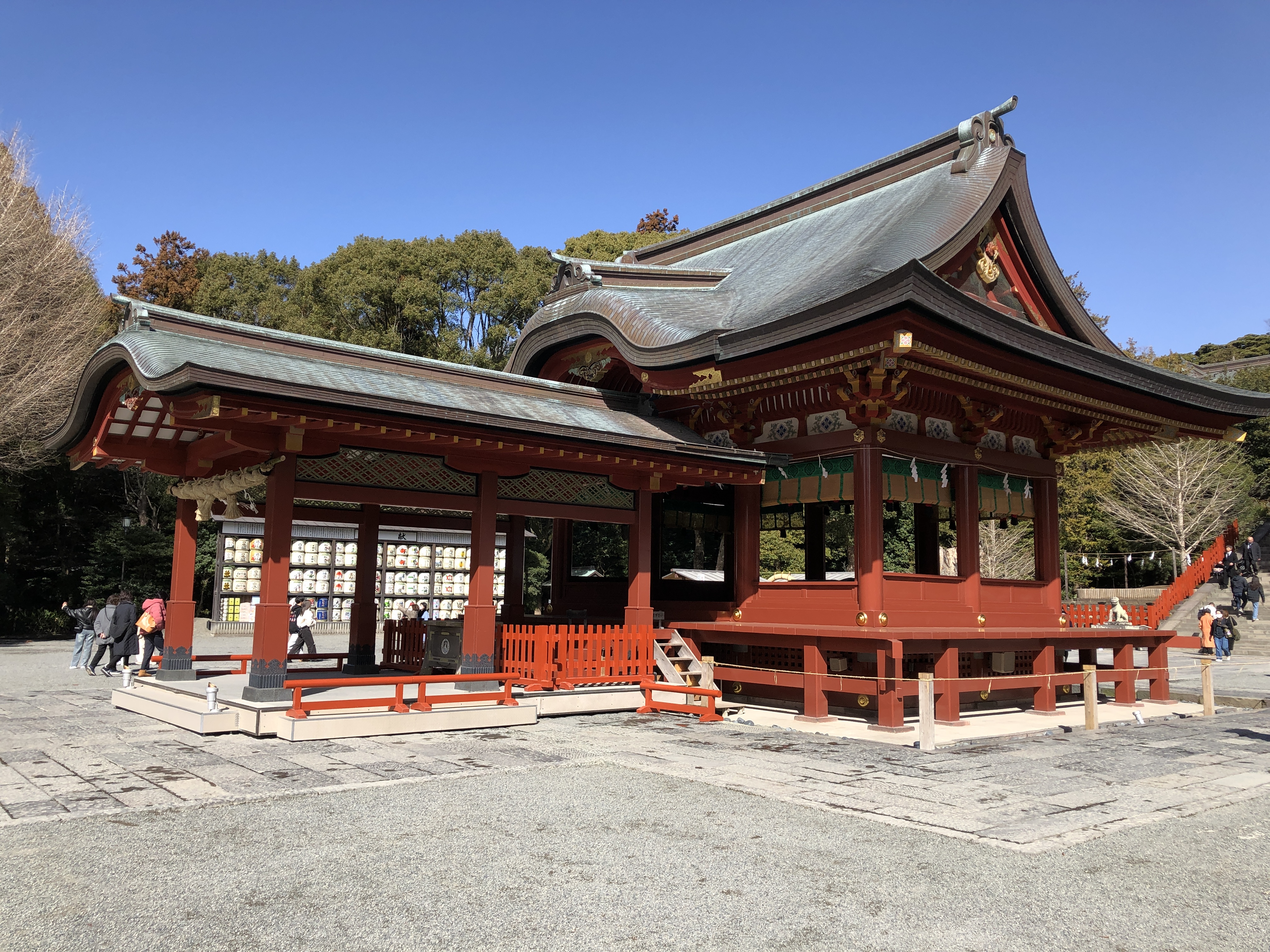
The structures aren’t 1,000 years old, owing to the usual cycle of destruction and reconstruction common to wooden buildings. The Meiji government ordered some of the destruction in the 19th century, when it decided that Buddhism and Shinto had to be separate things. Previously rampant syncretism between the two in Japan had been the order of the day, but apparently that would never do, and so a fair number of sacred sites were thus destroyed, including structures at Tsurugaoka Hachimangu.
The stairs to the main sanctuary. 
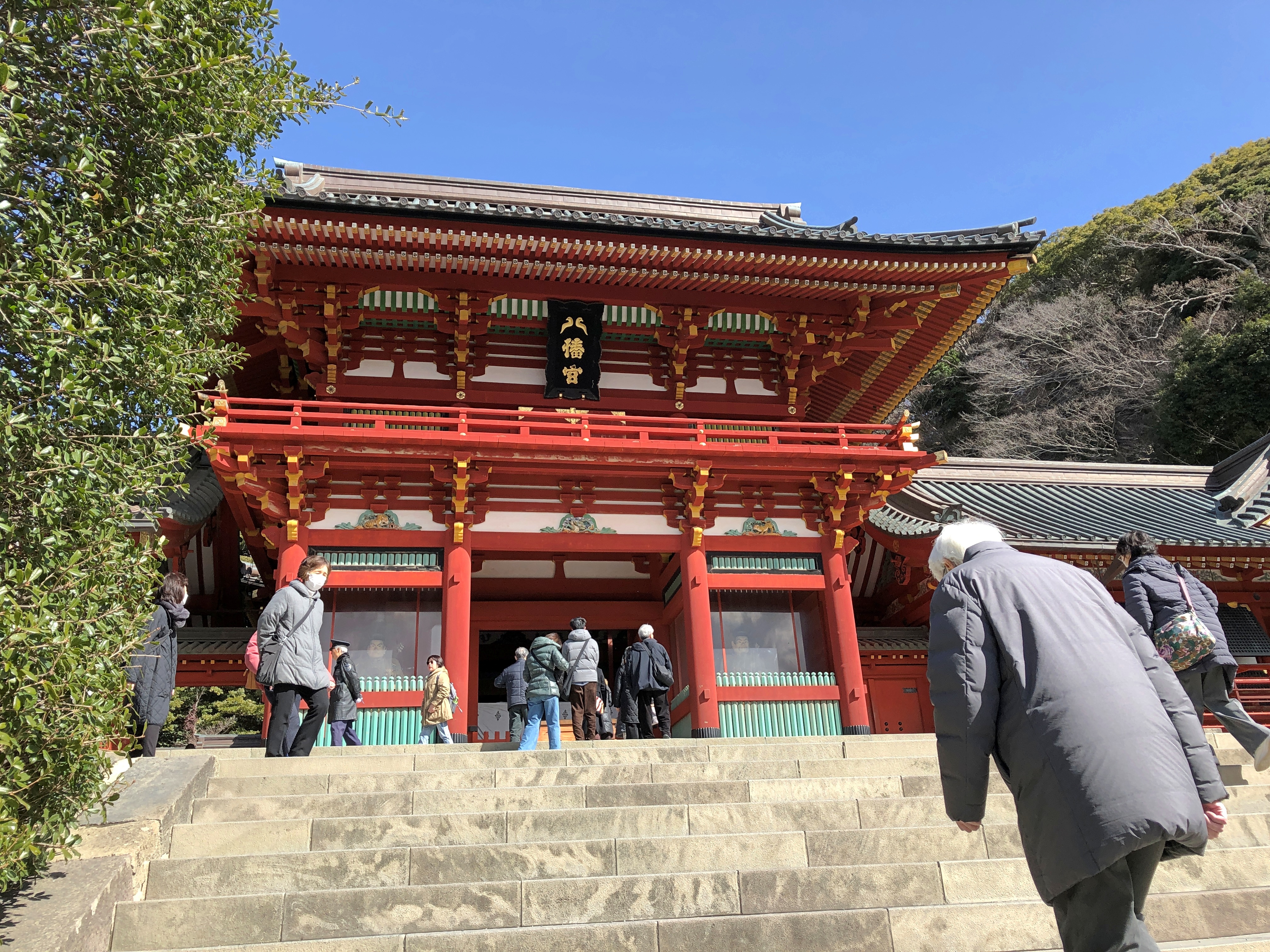

The “semi-mythical” Emperor Ojin, according to a sign in Japanese and English, is enshrined there as a kami. As far as I can tell, there isn’t agreement on whether such a human ruler of that name actually existed back in the first millennium CE, but I expect a niggling little detail like that wouldn’t bother a kami.
Speaking of torii, these mark the path to a sub-shrine, Maruyama Inari. 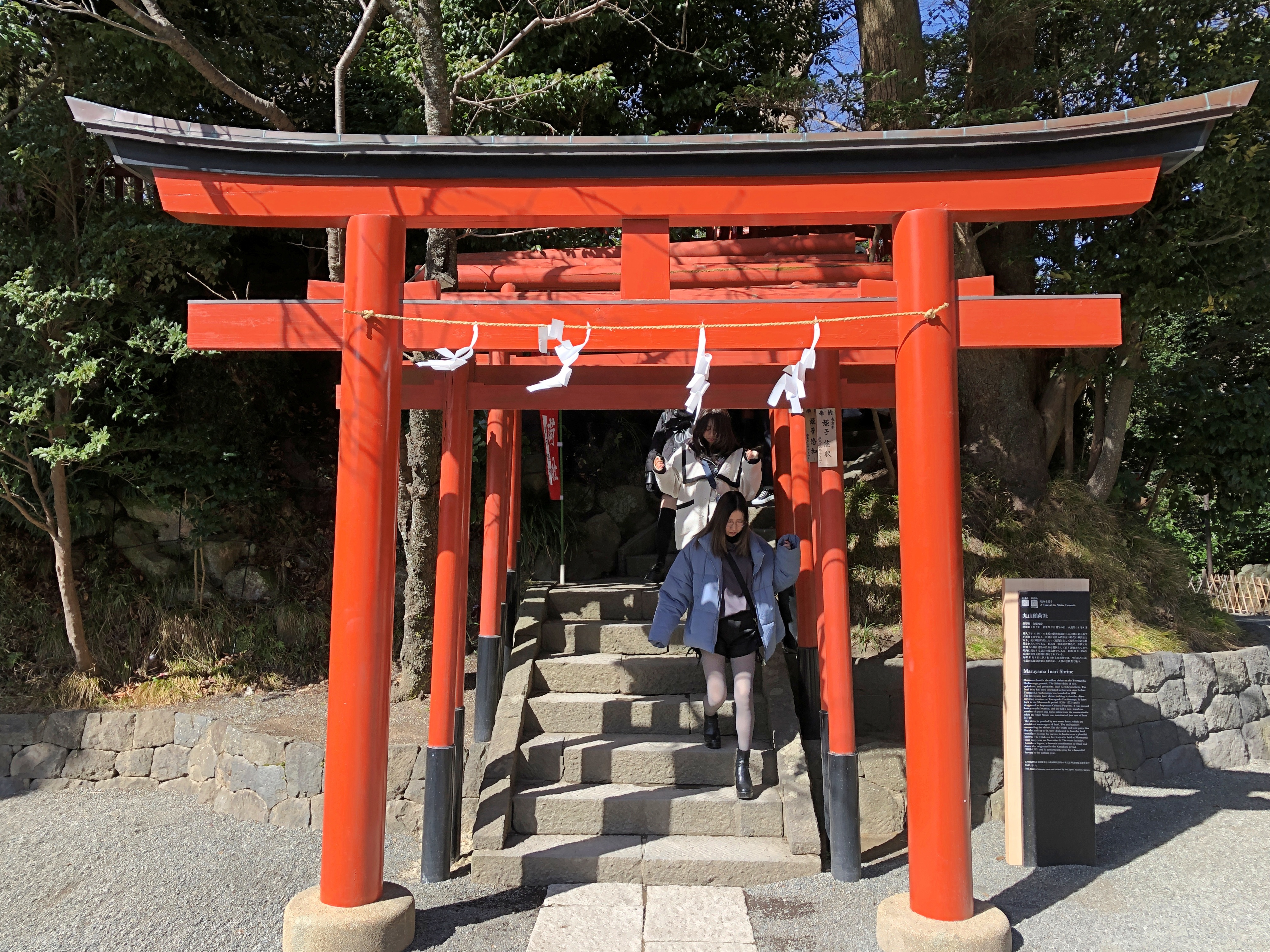
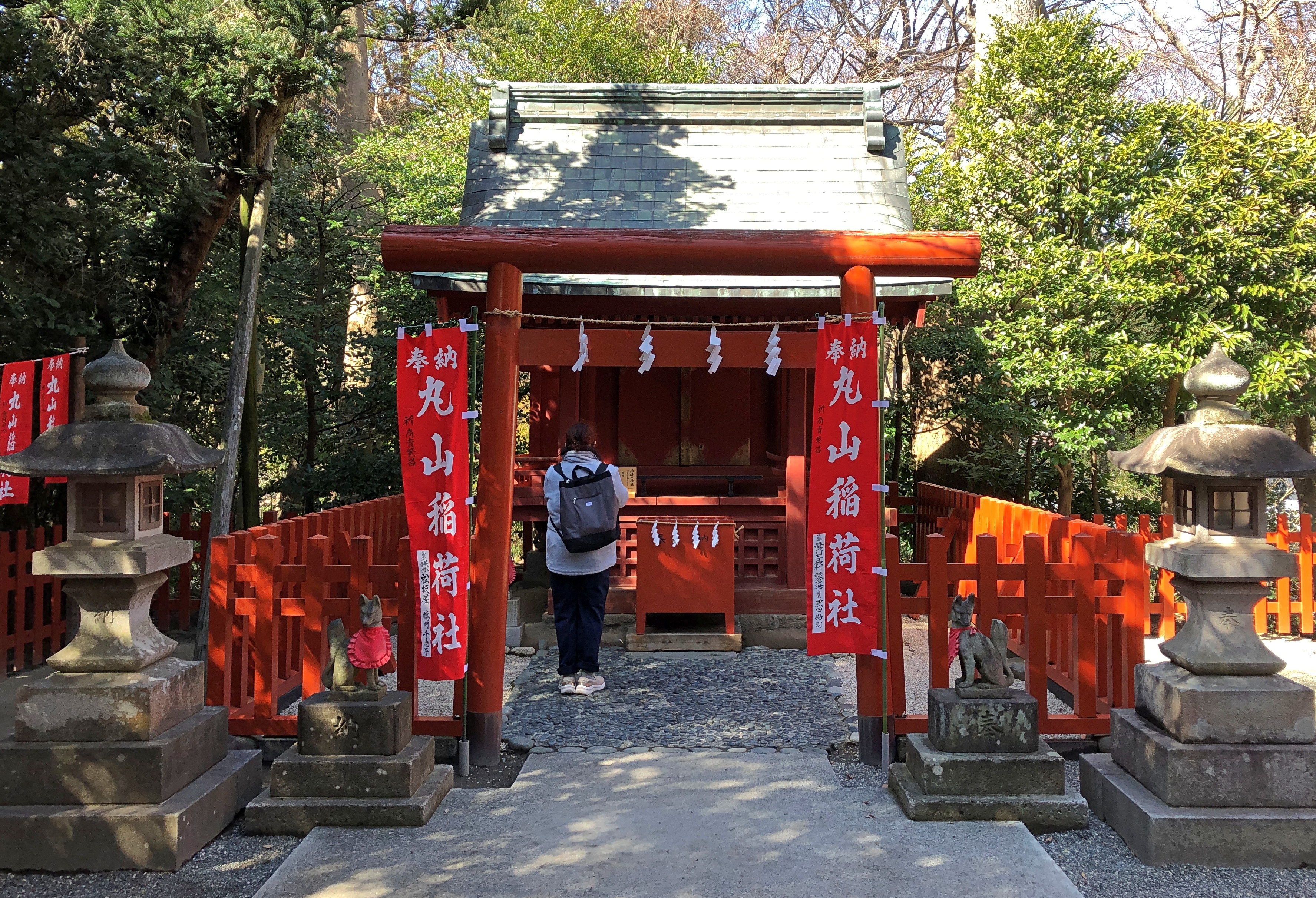
Small, but that is presumably all the god of rice, agriculture and prosperity Inari needs, to do whatever it is kami do.
